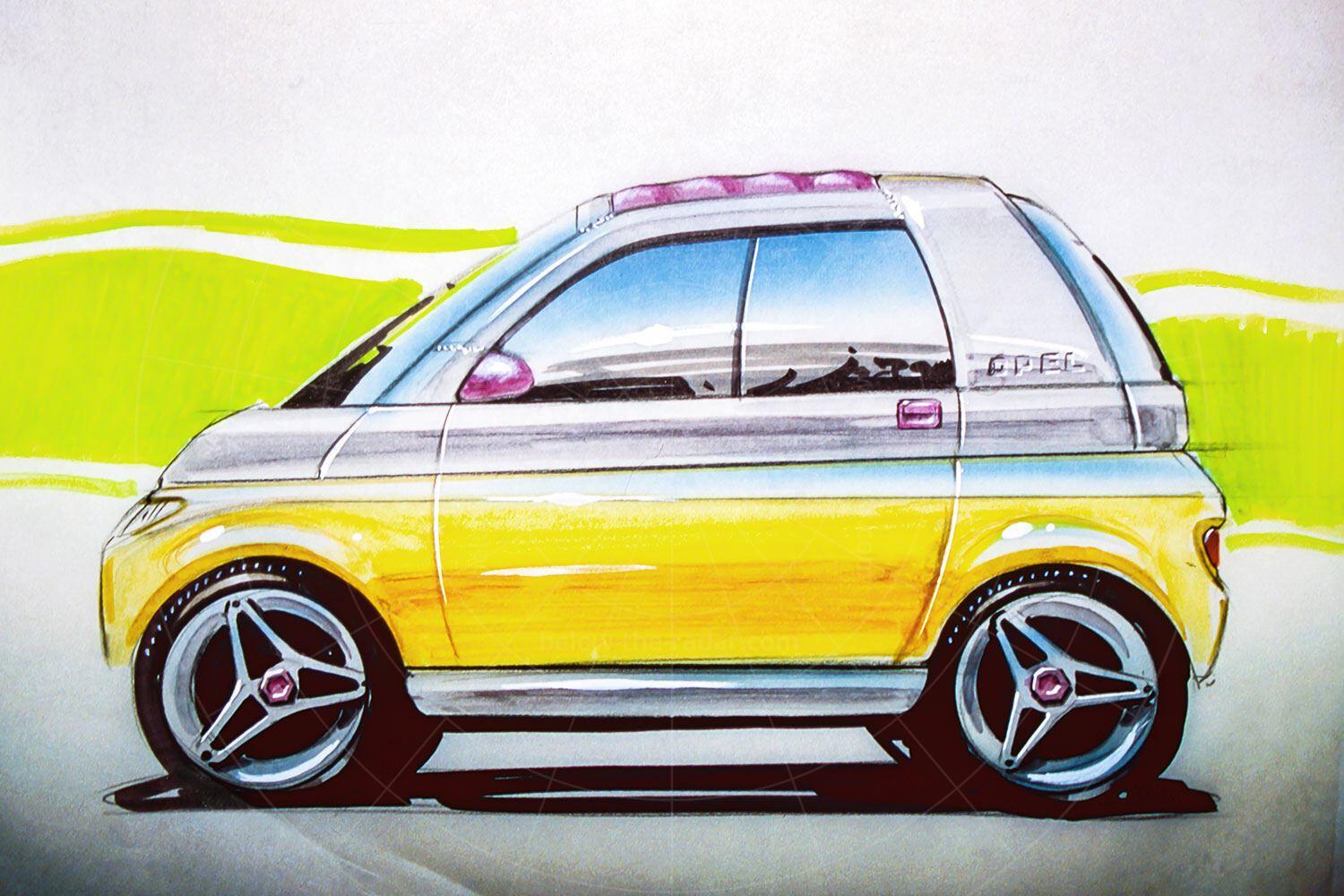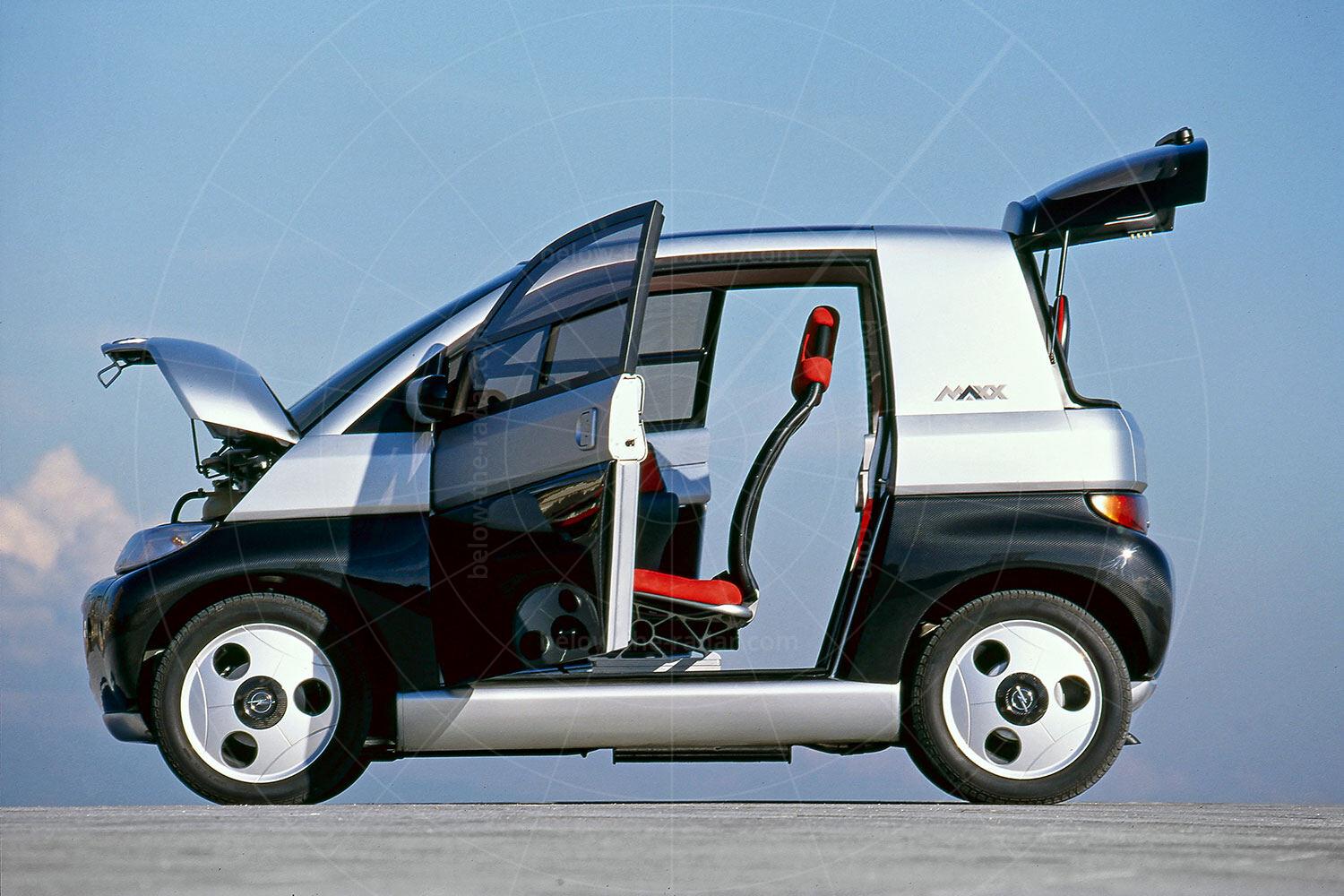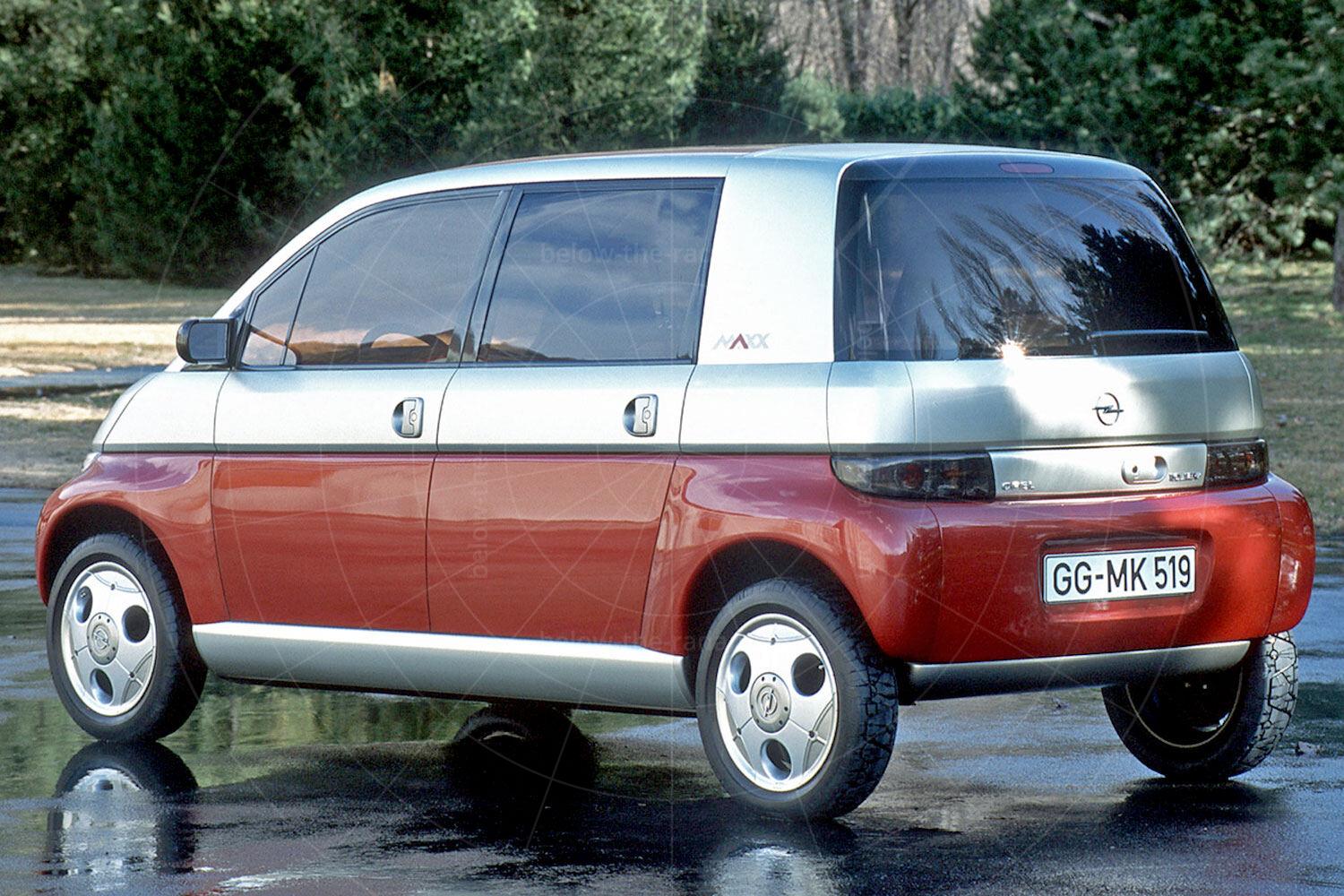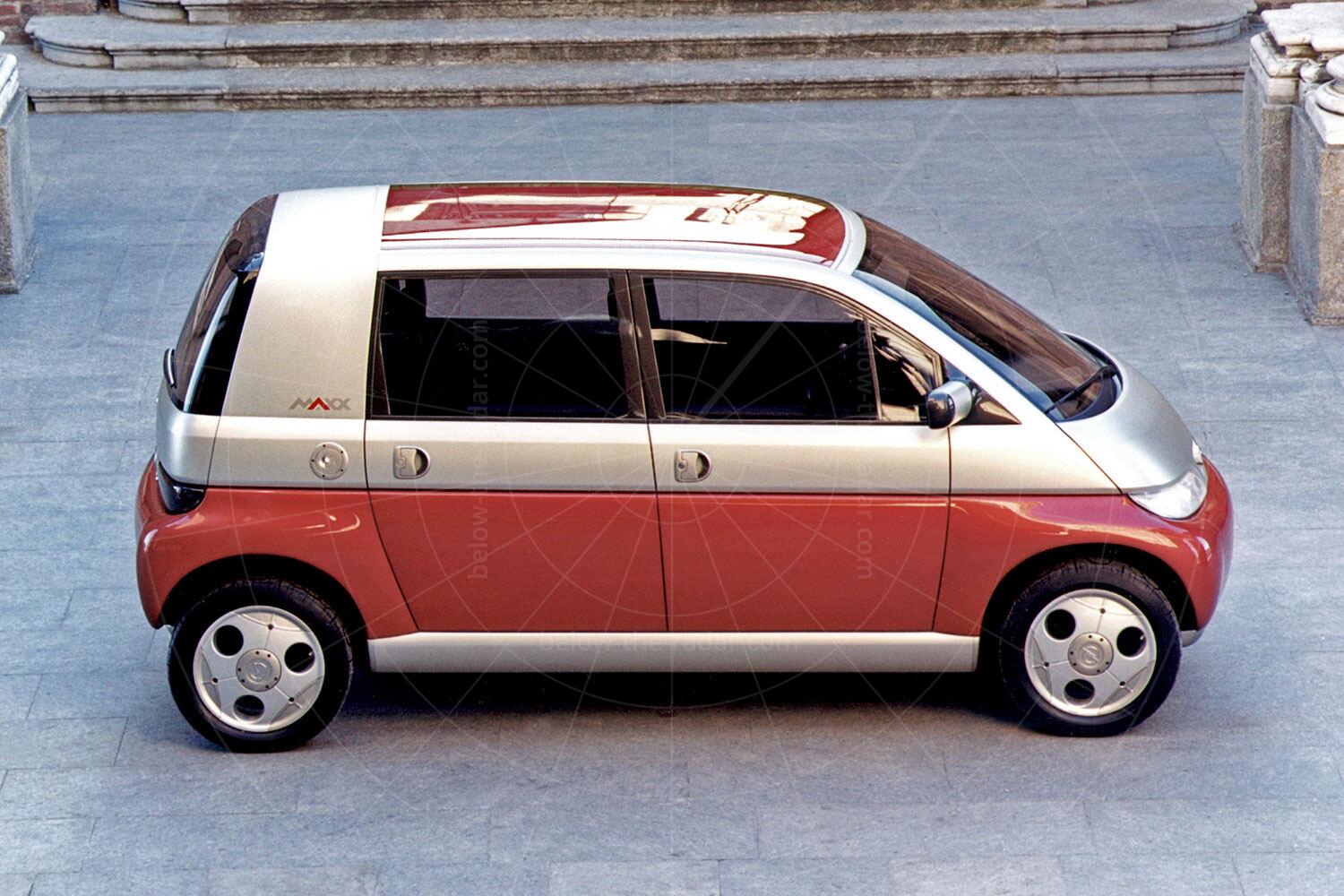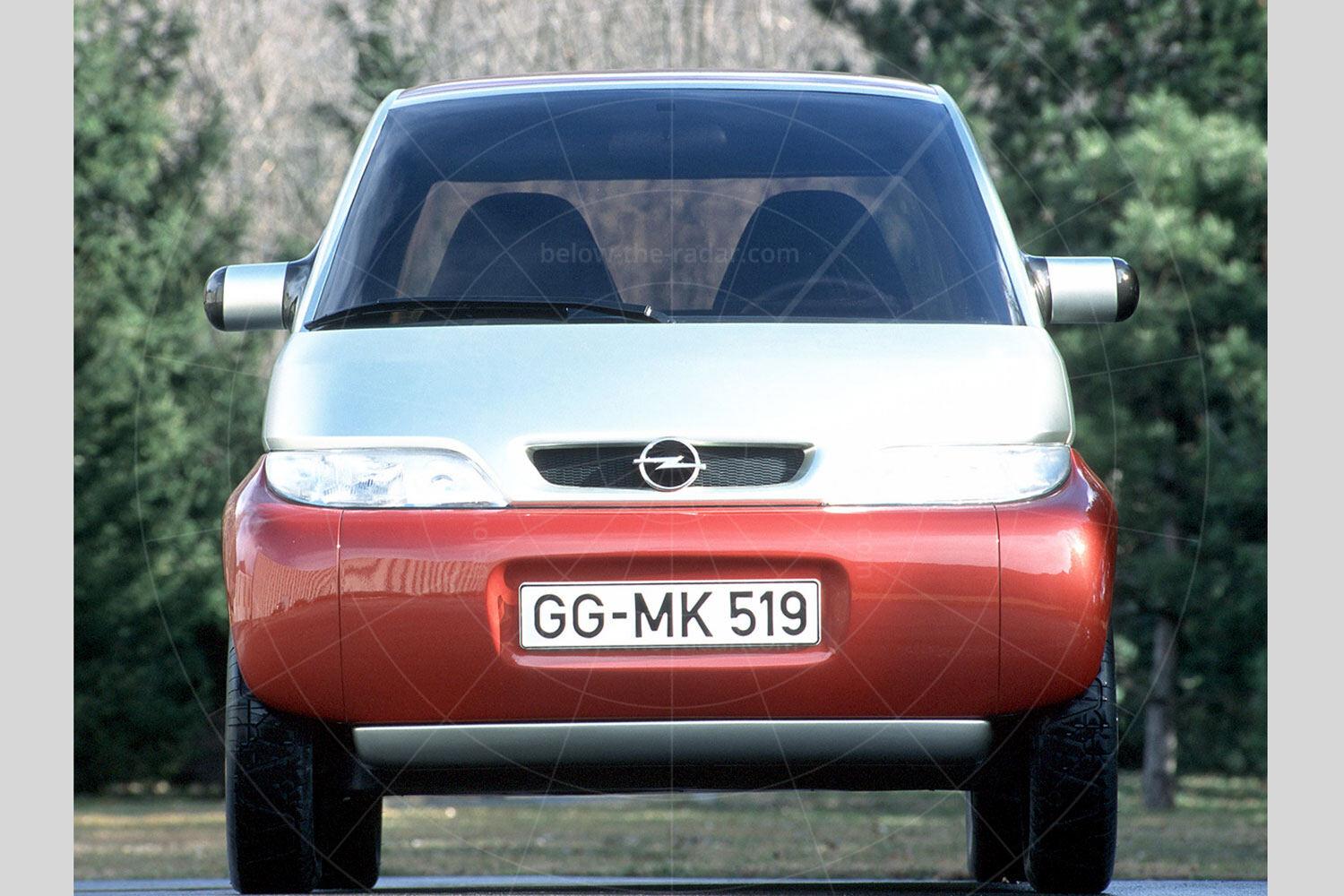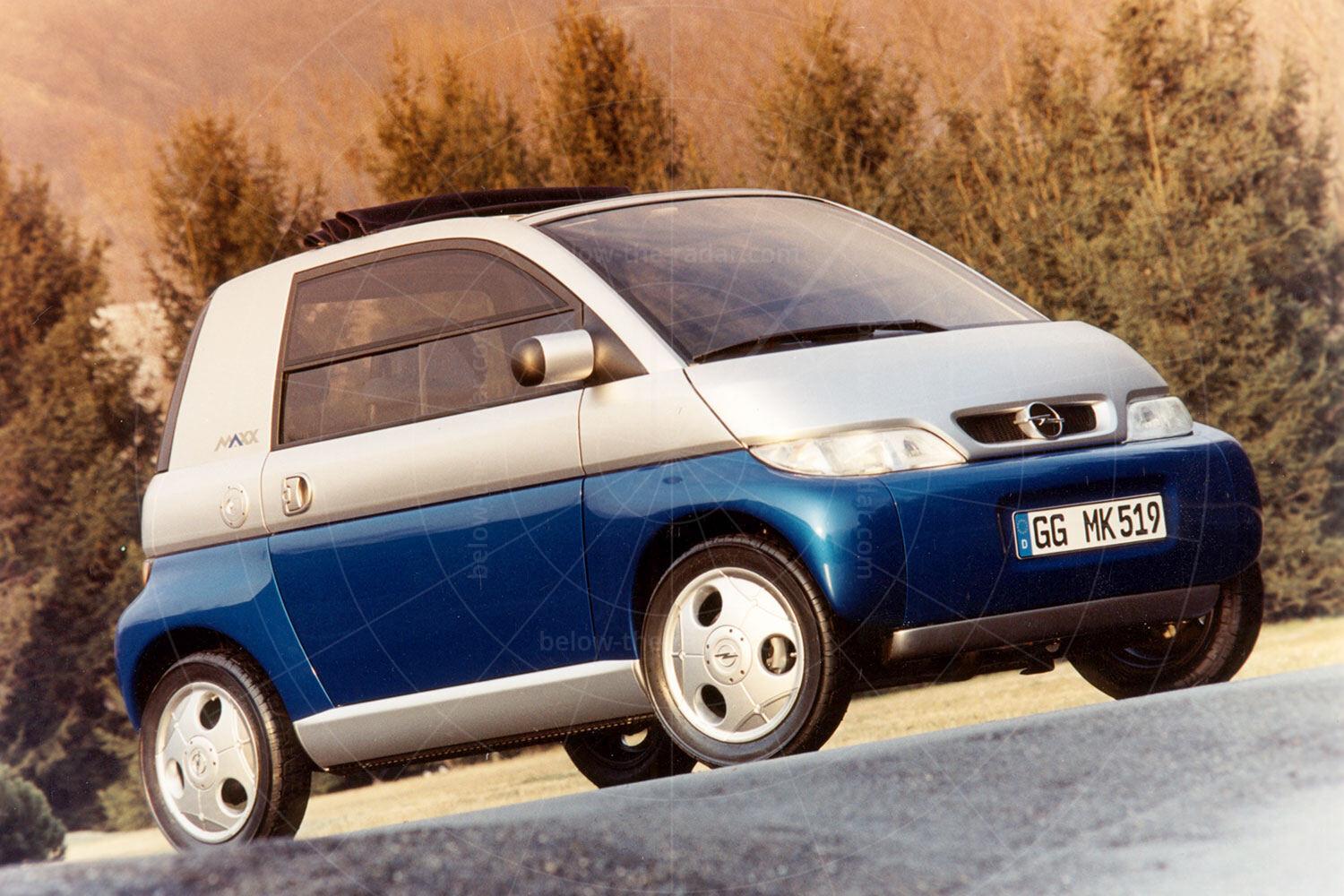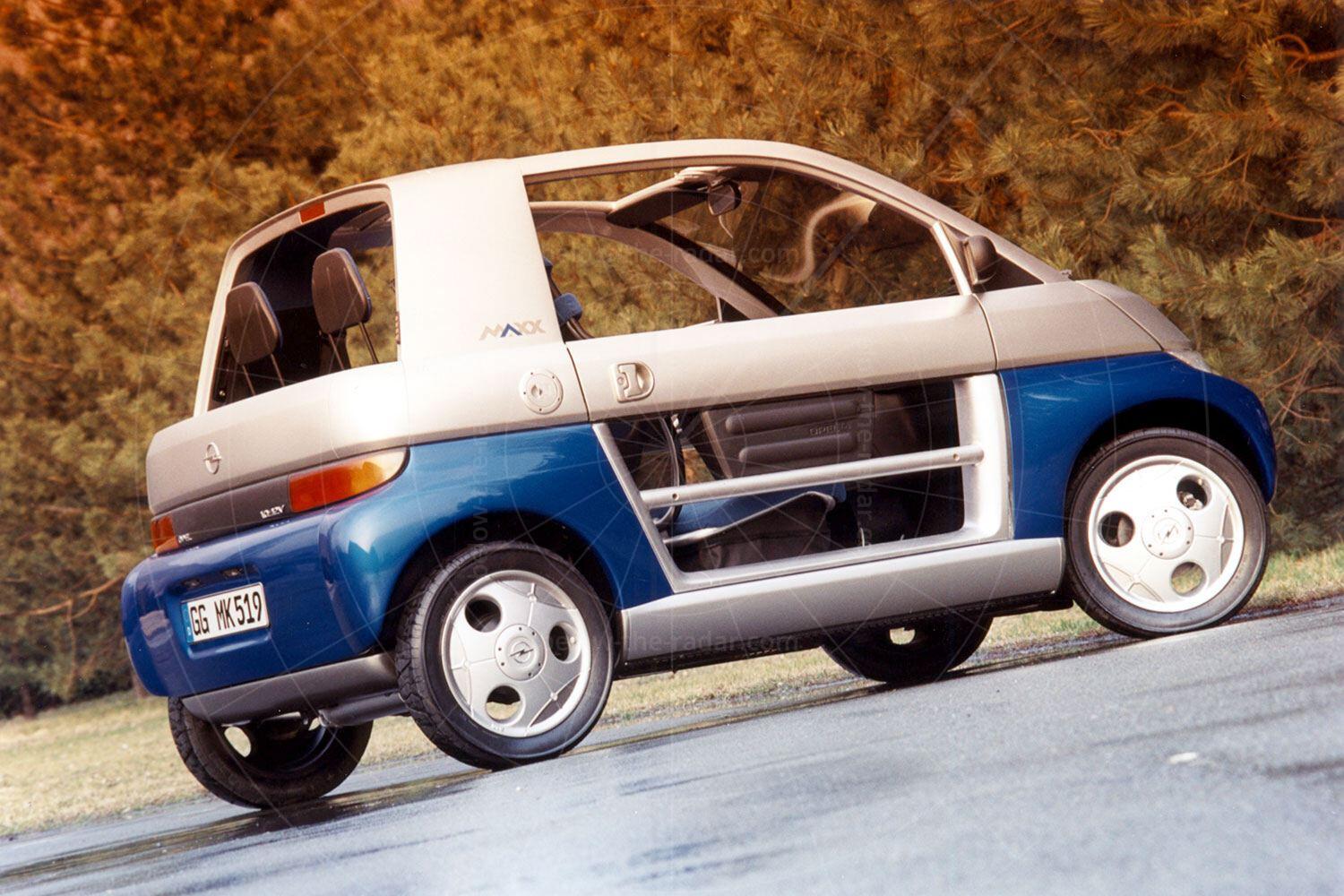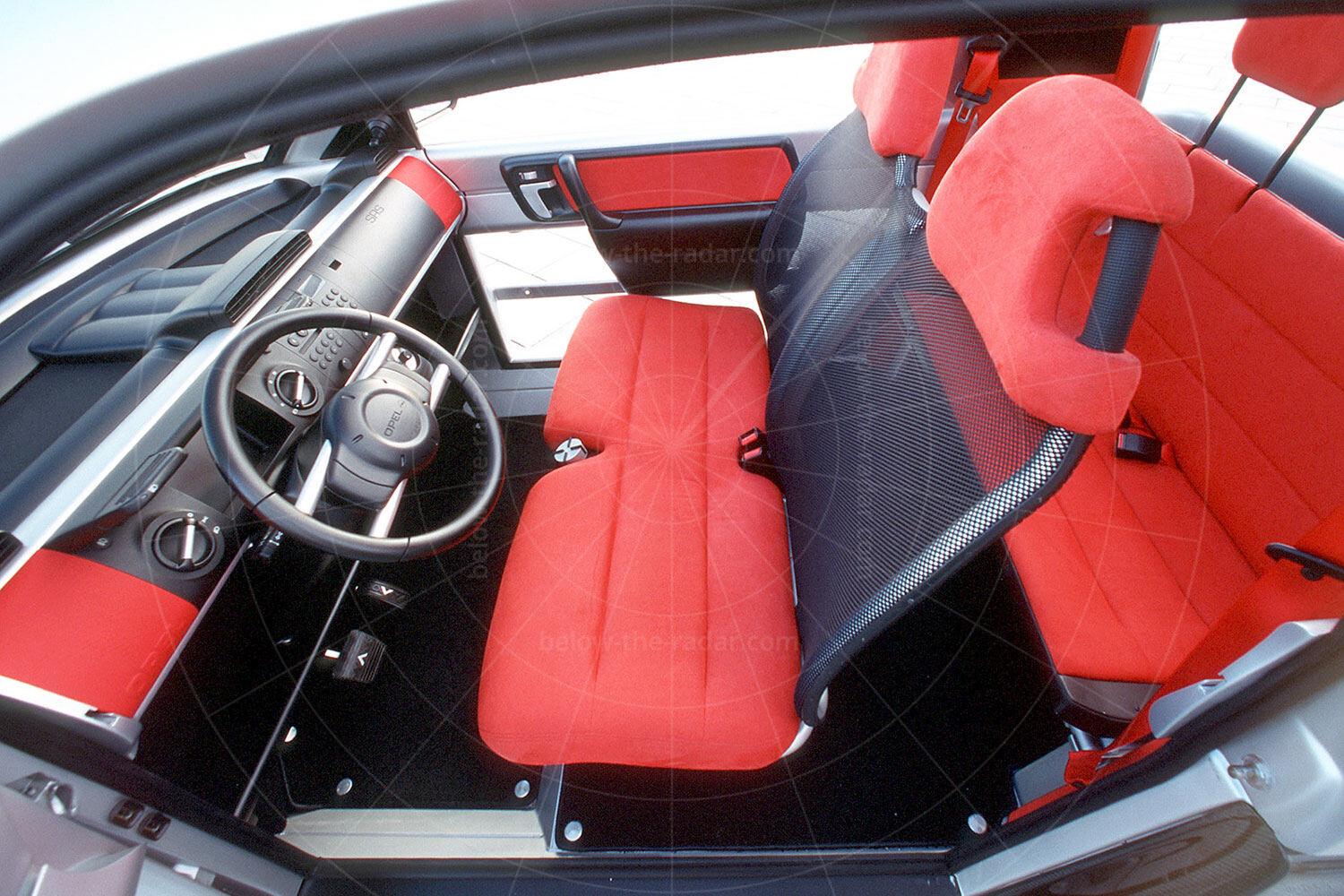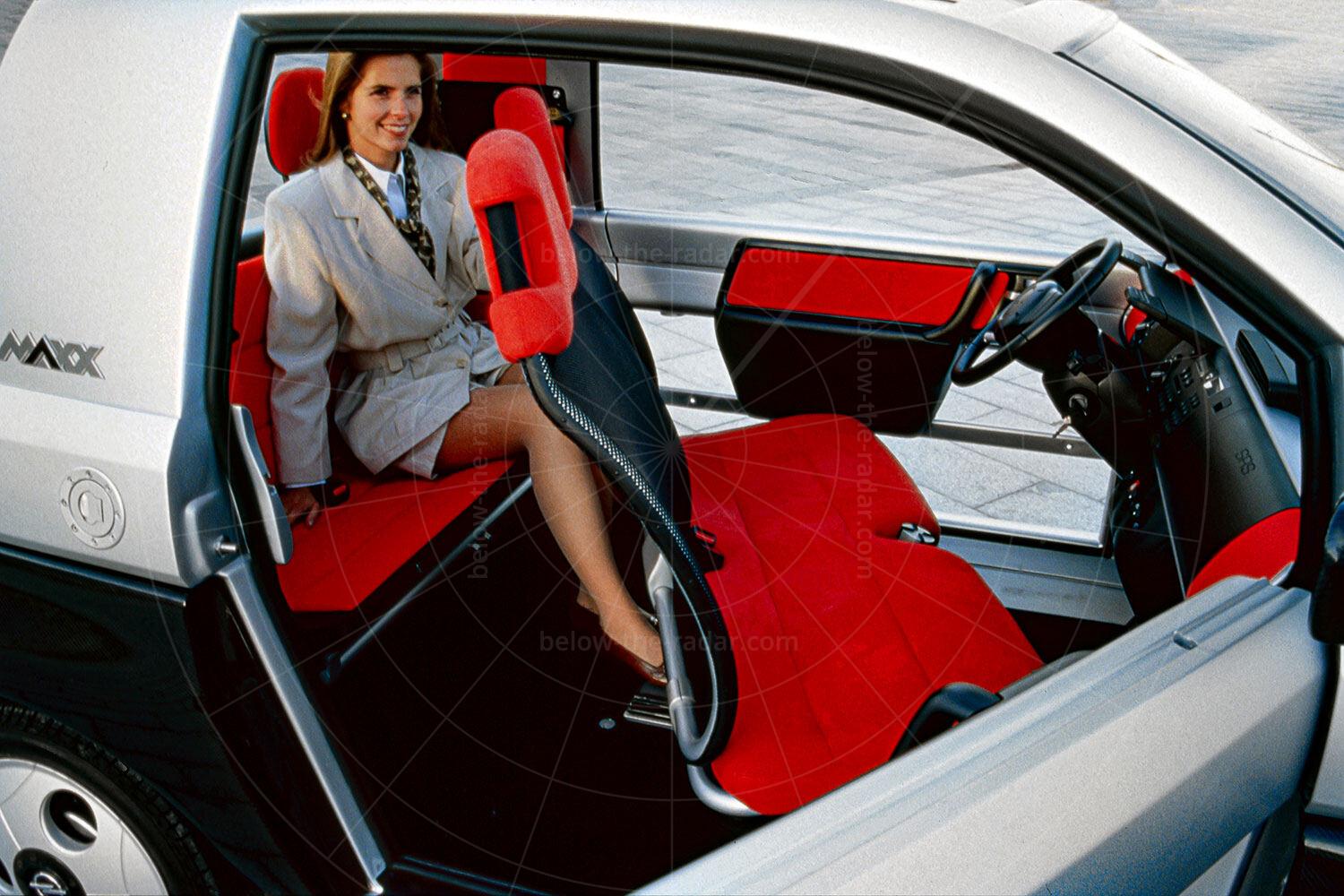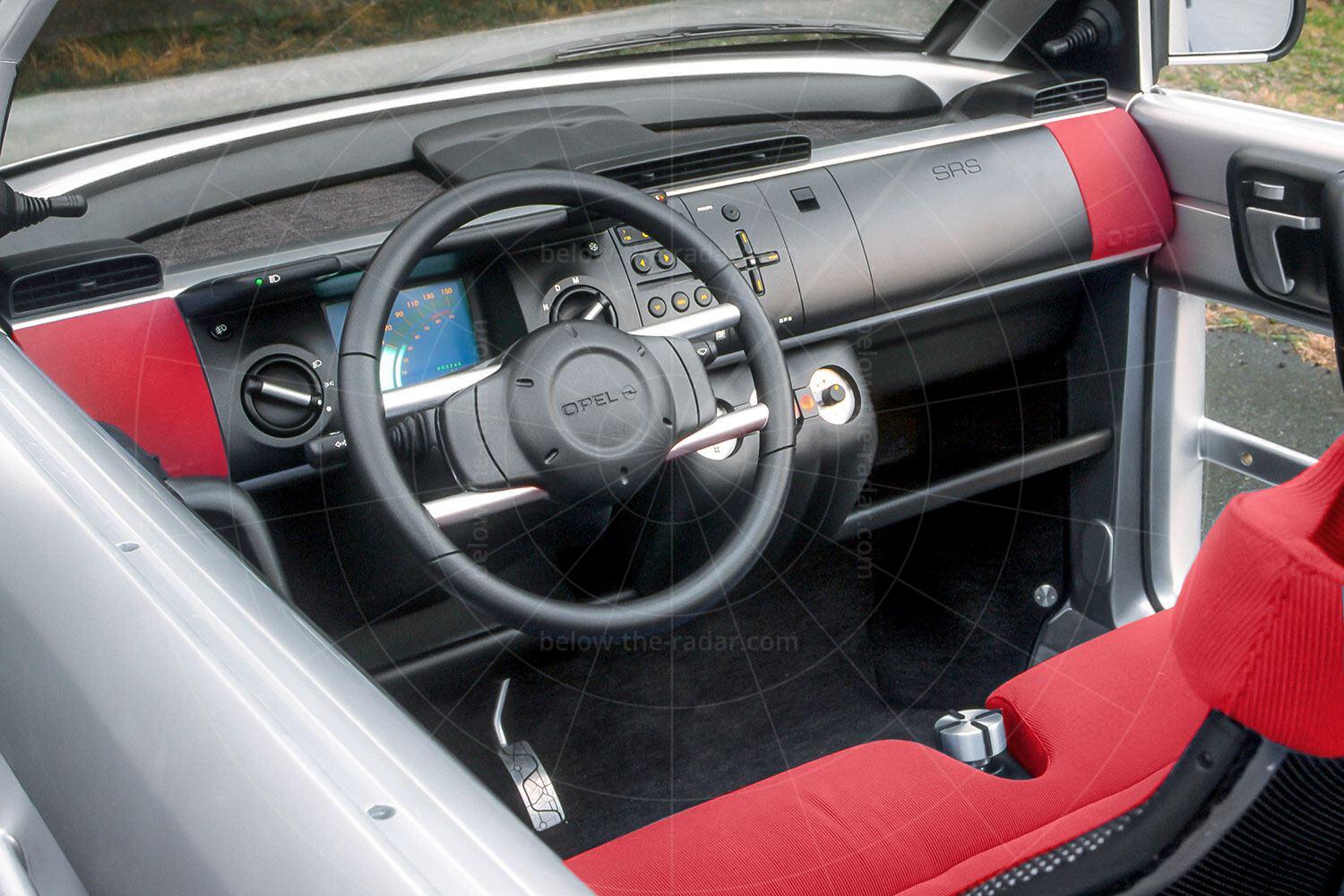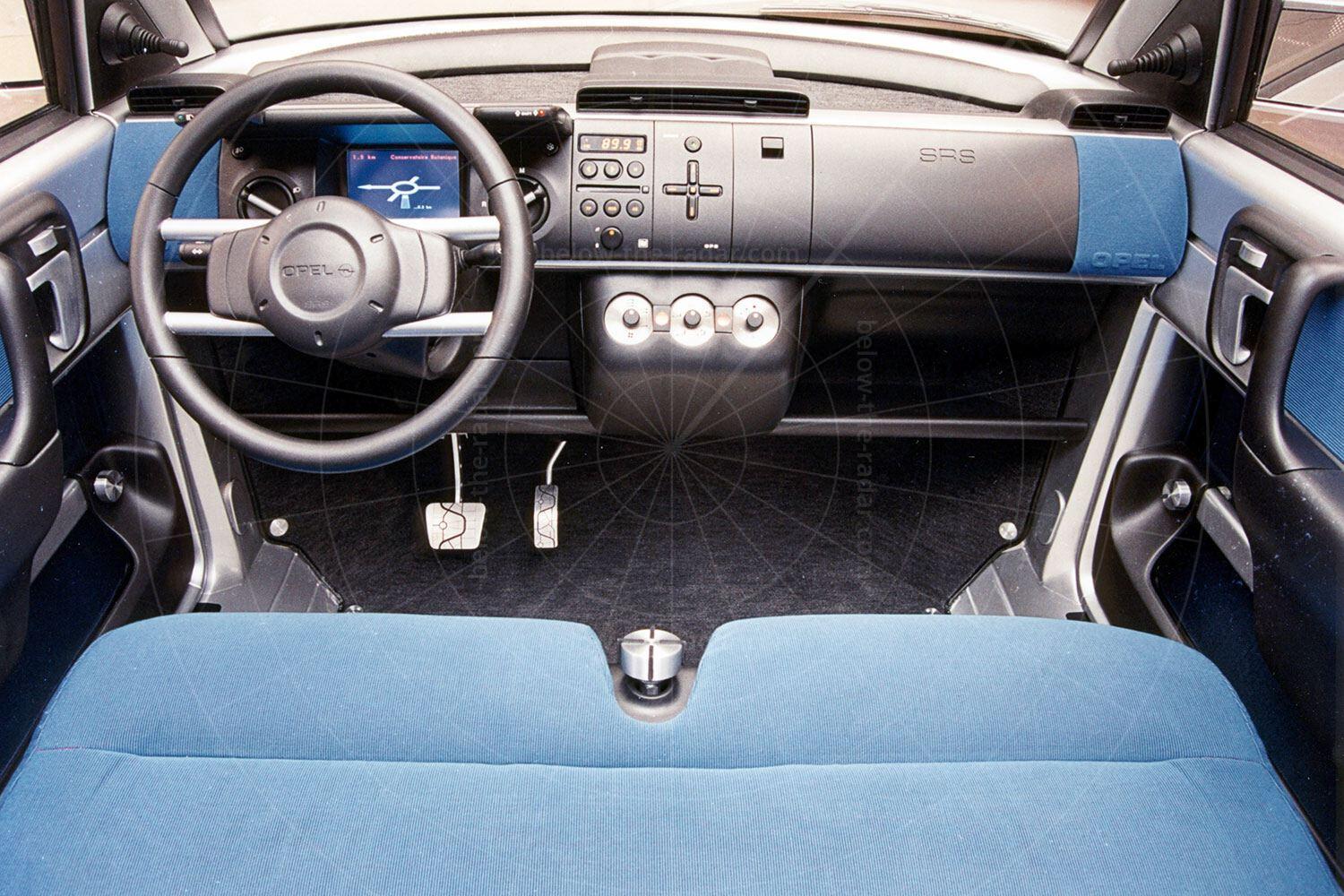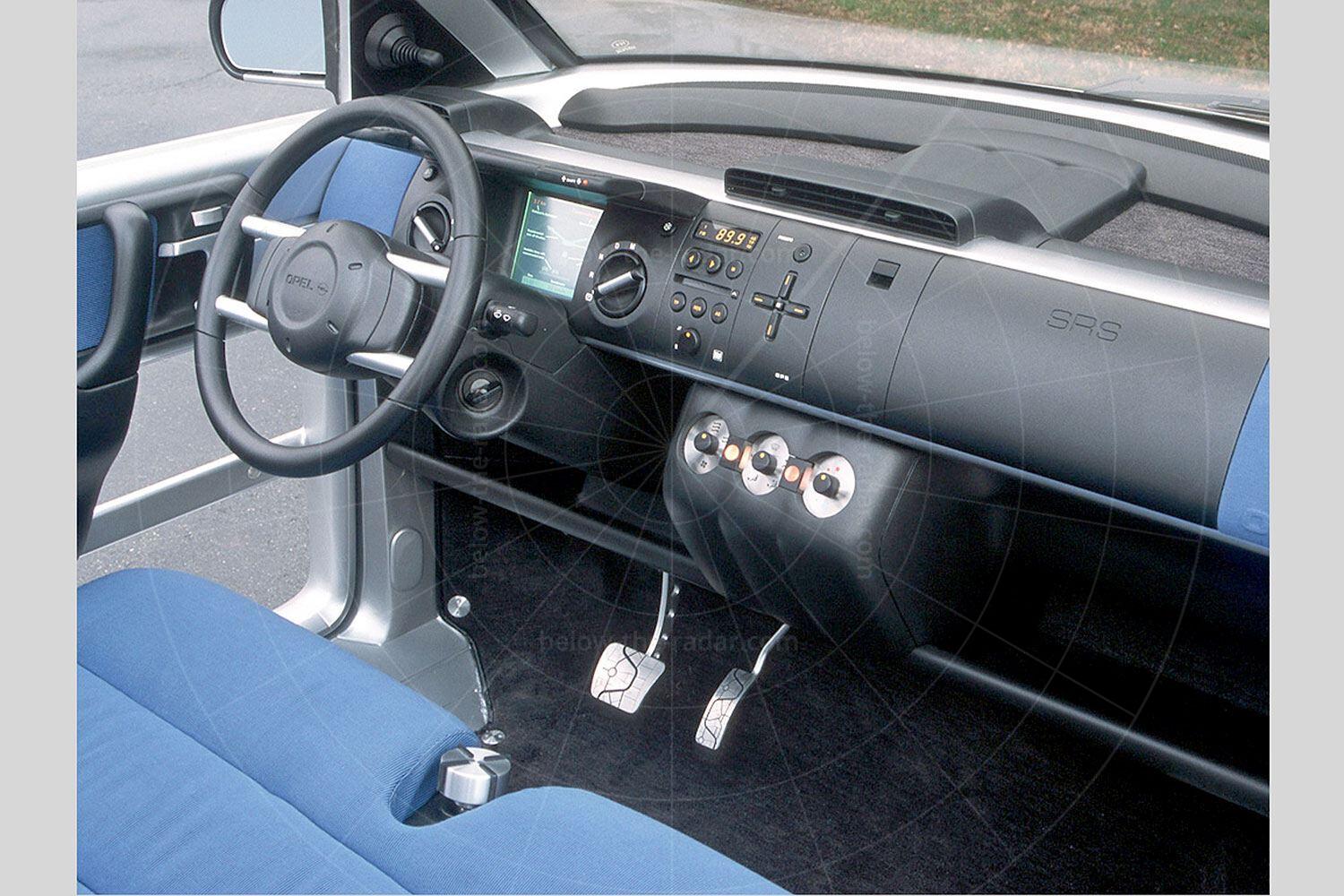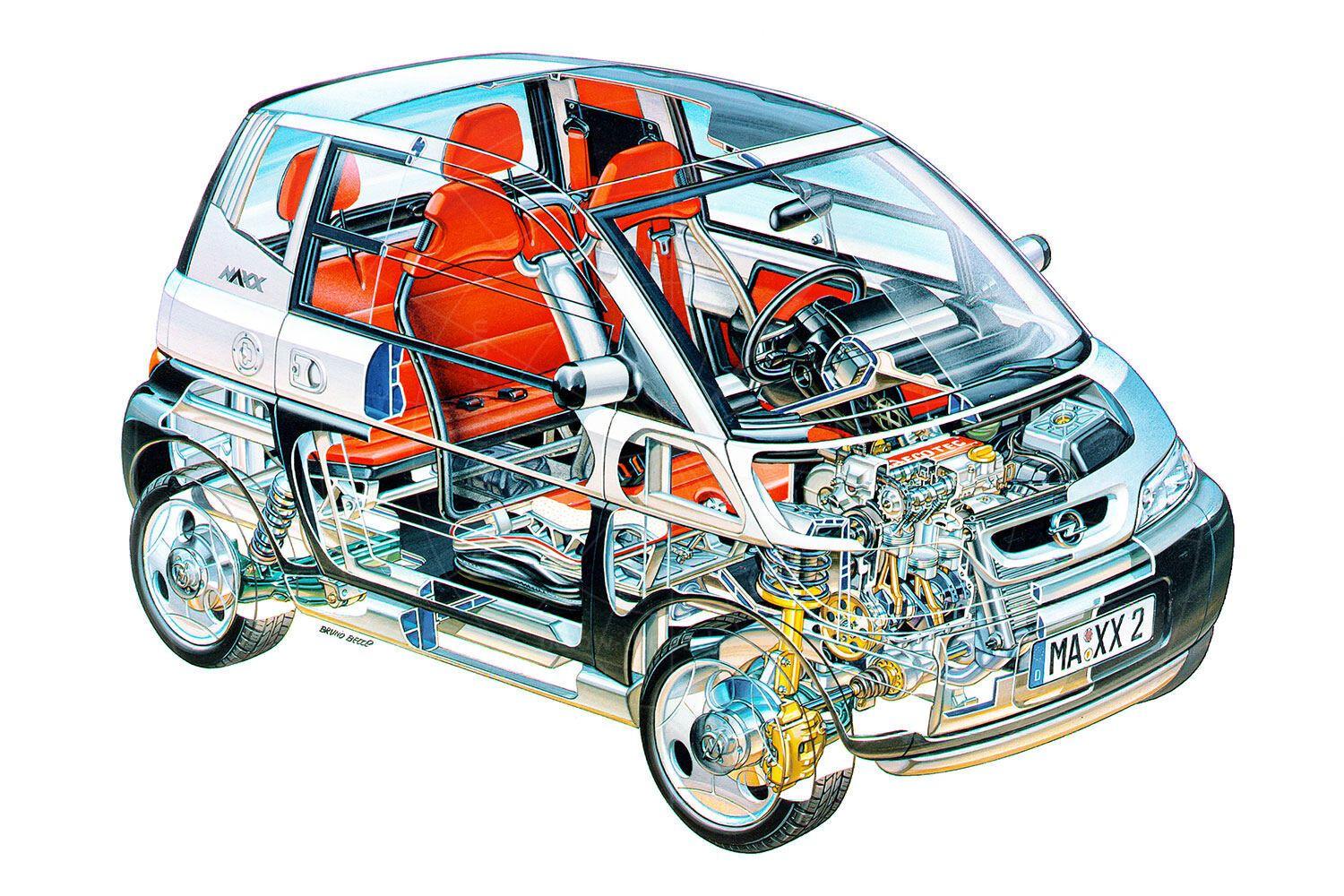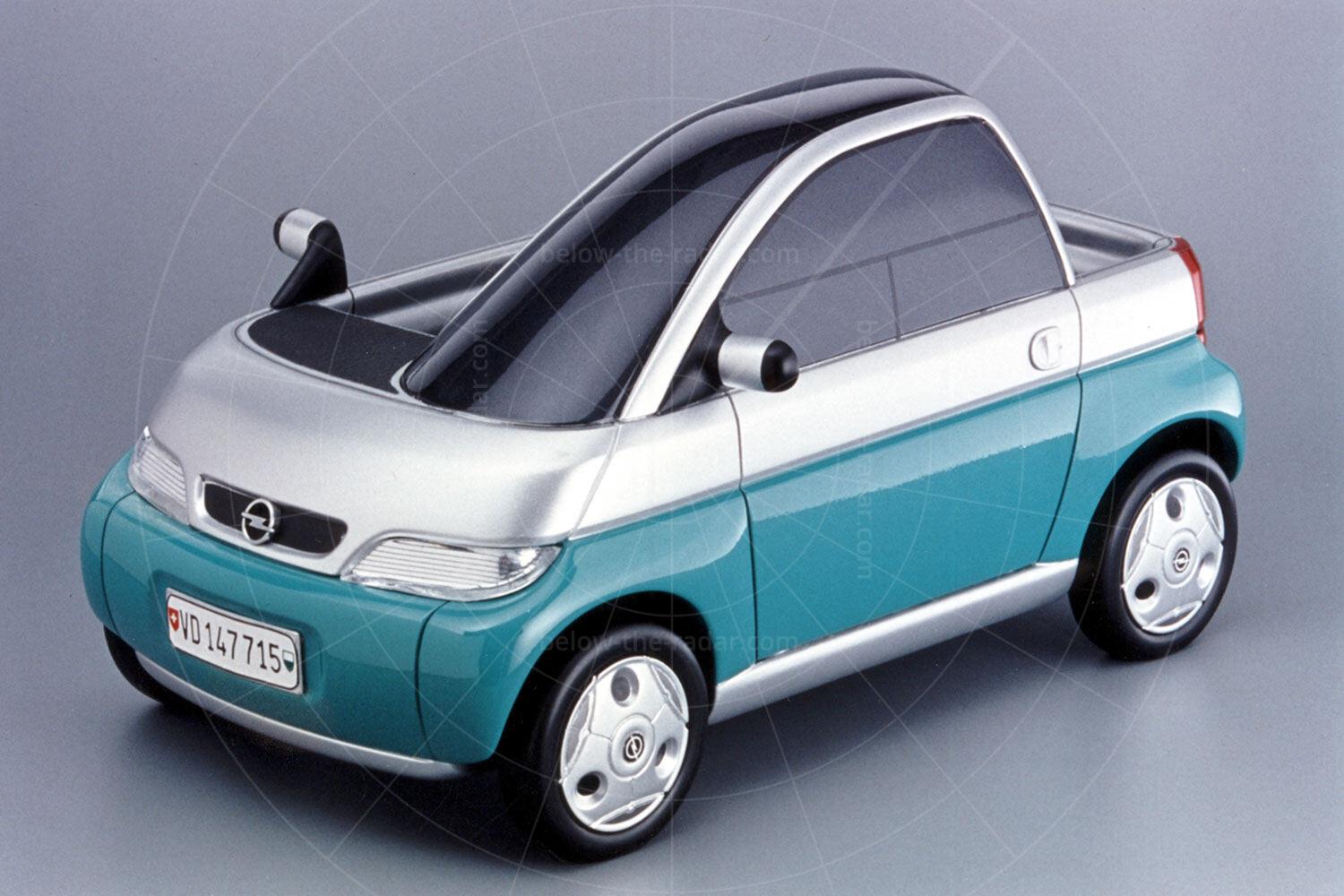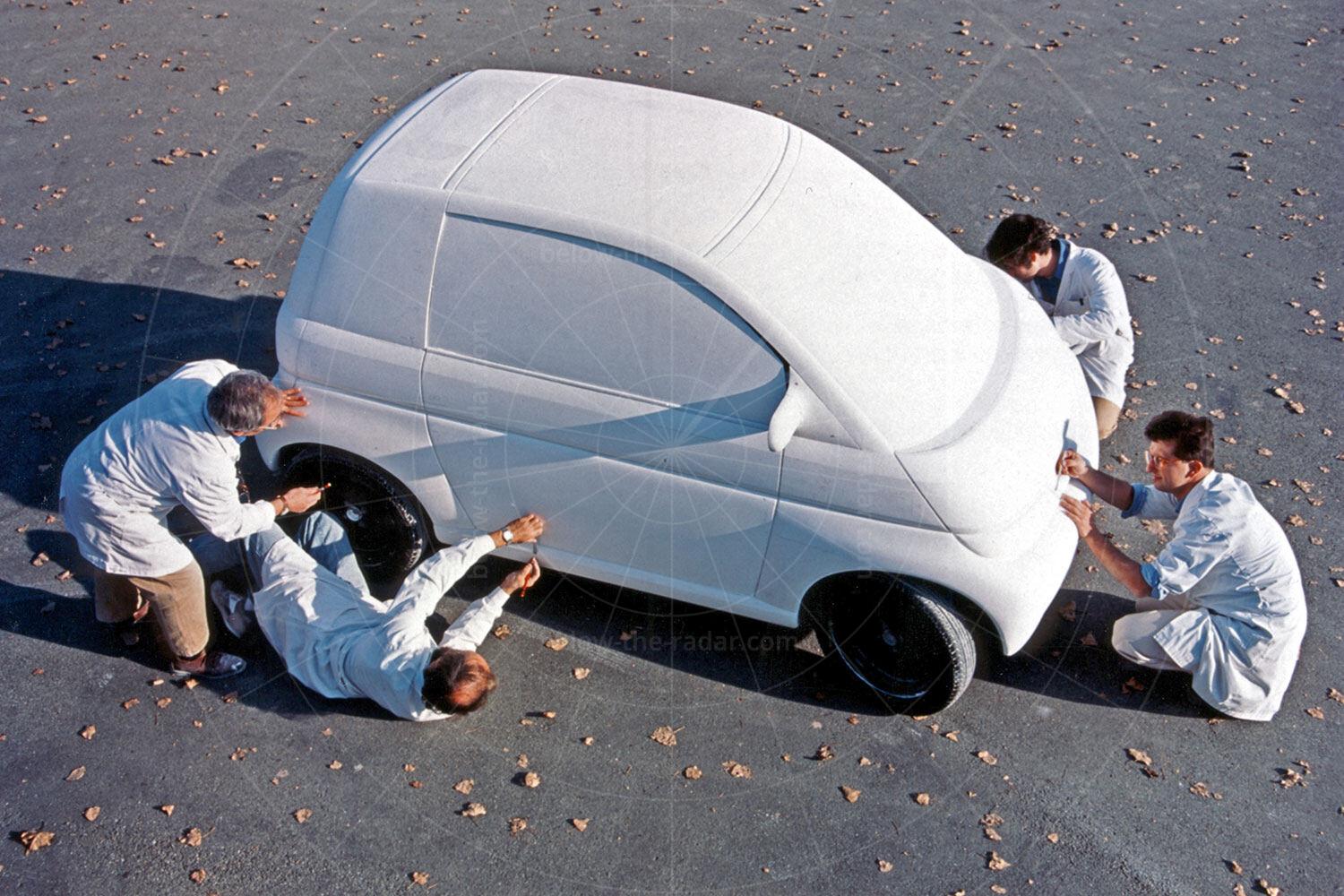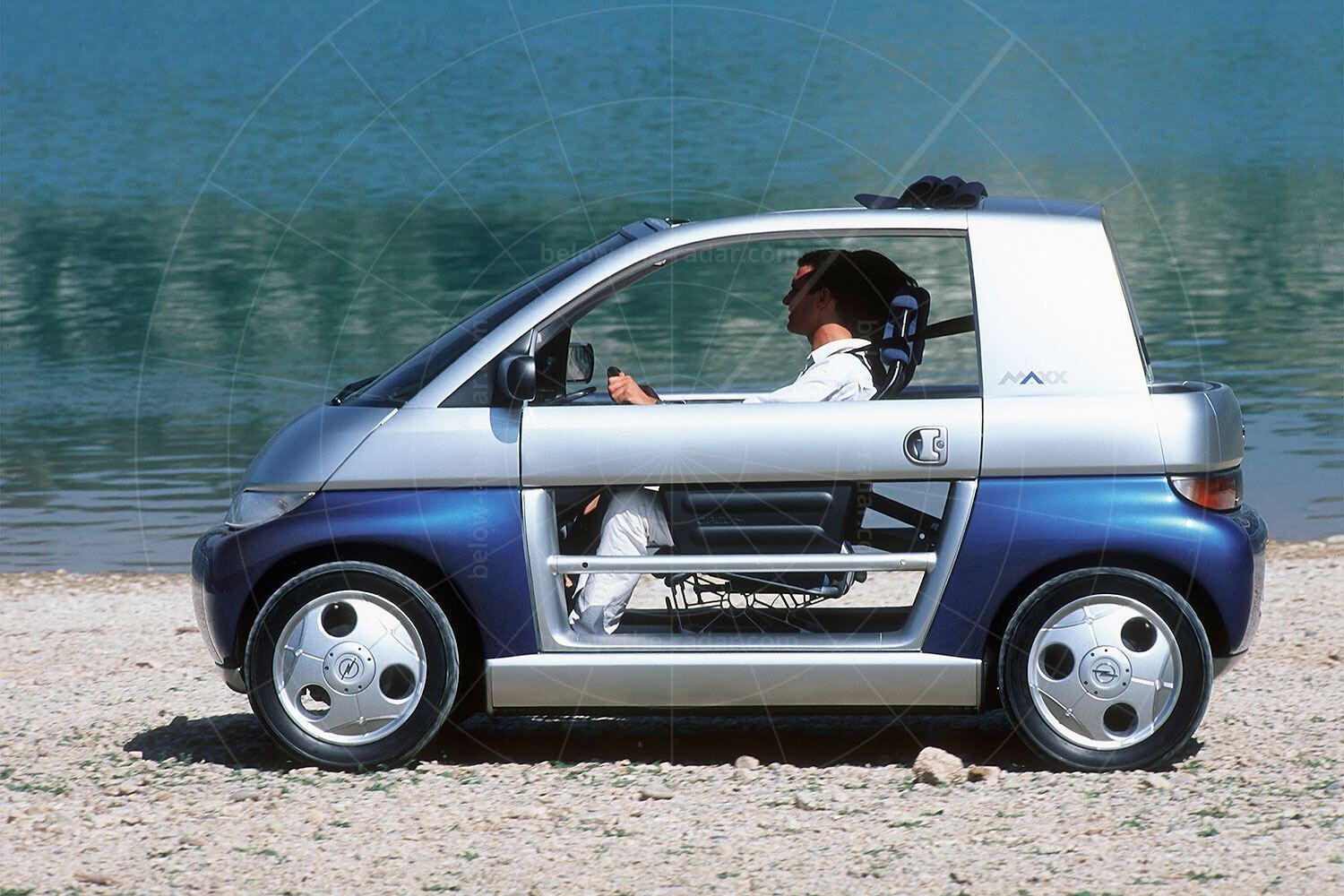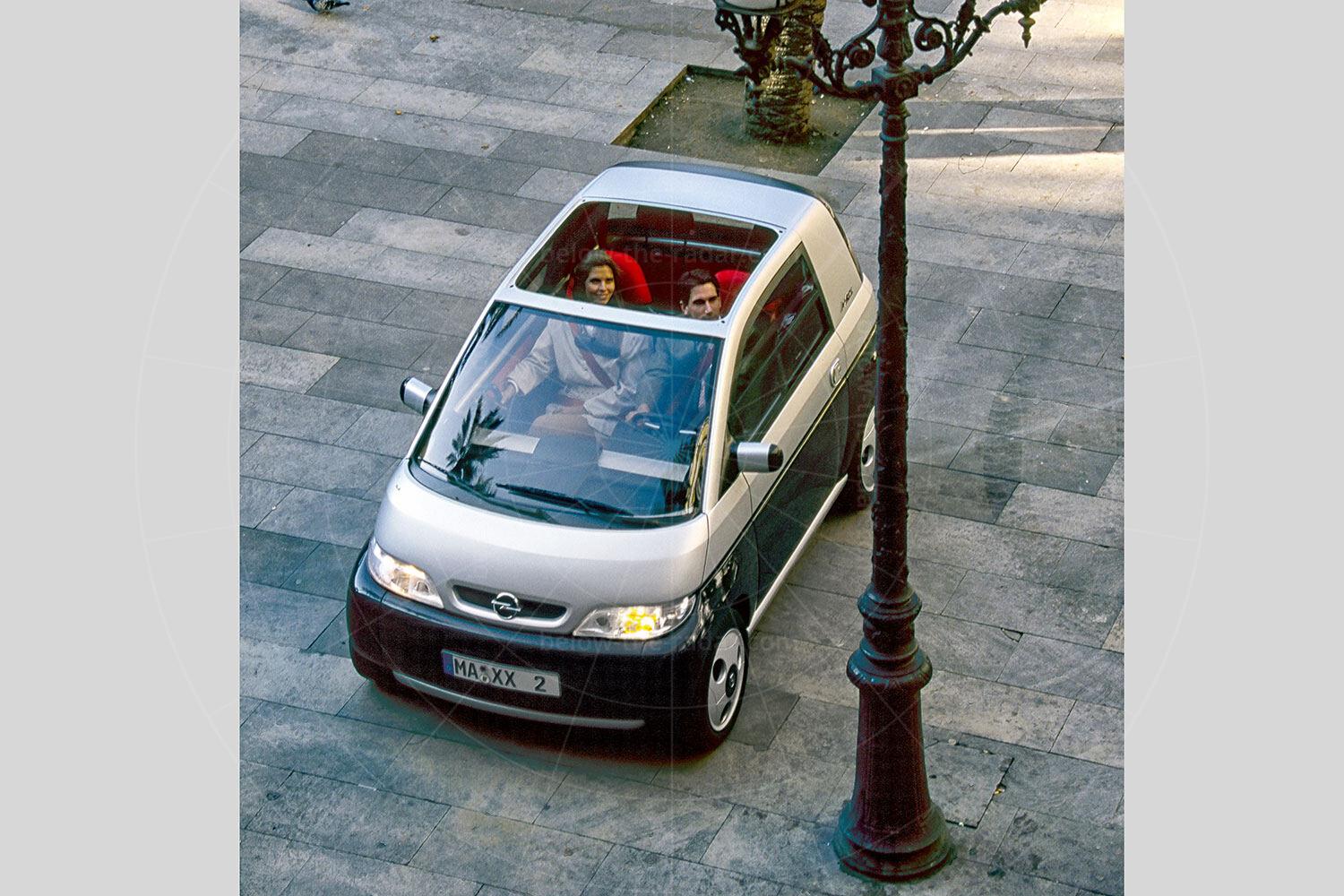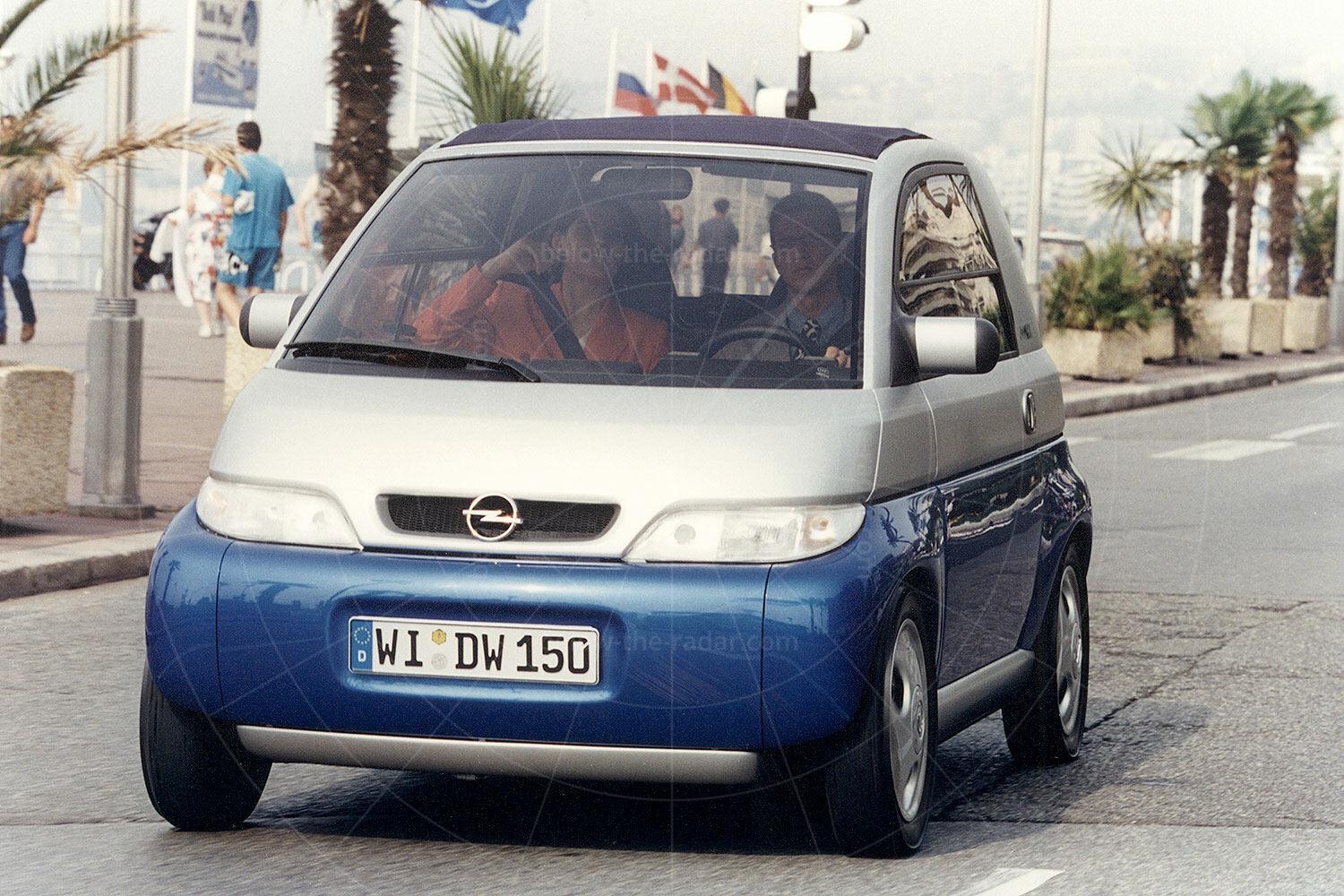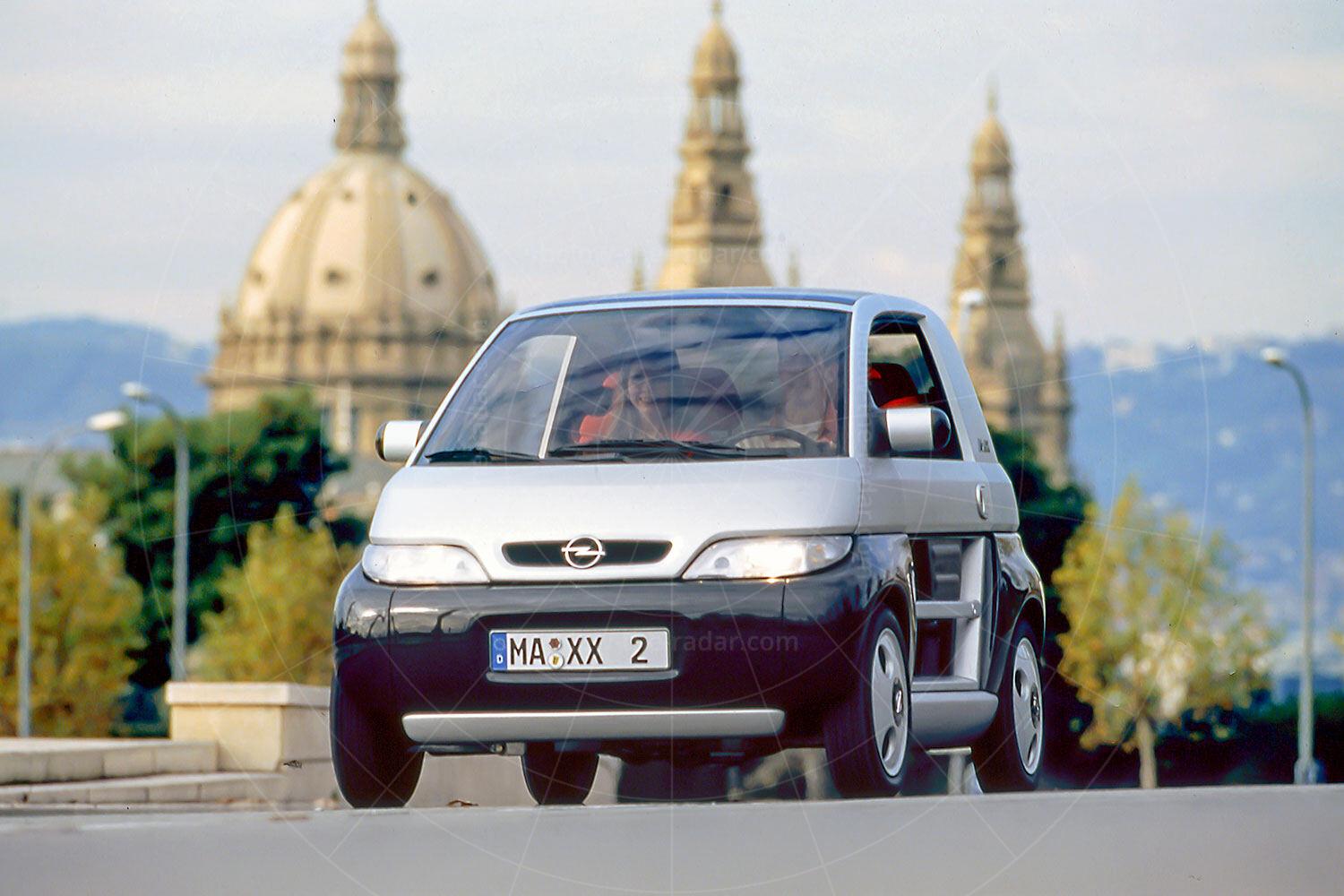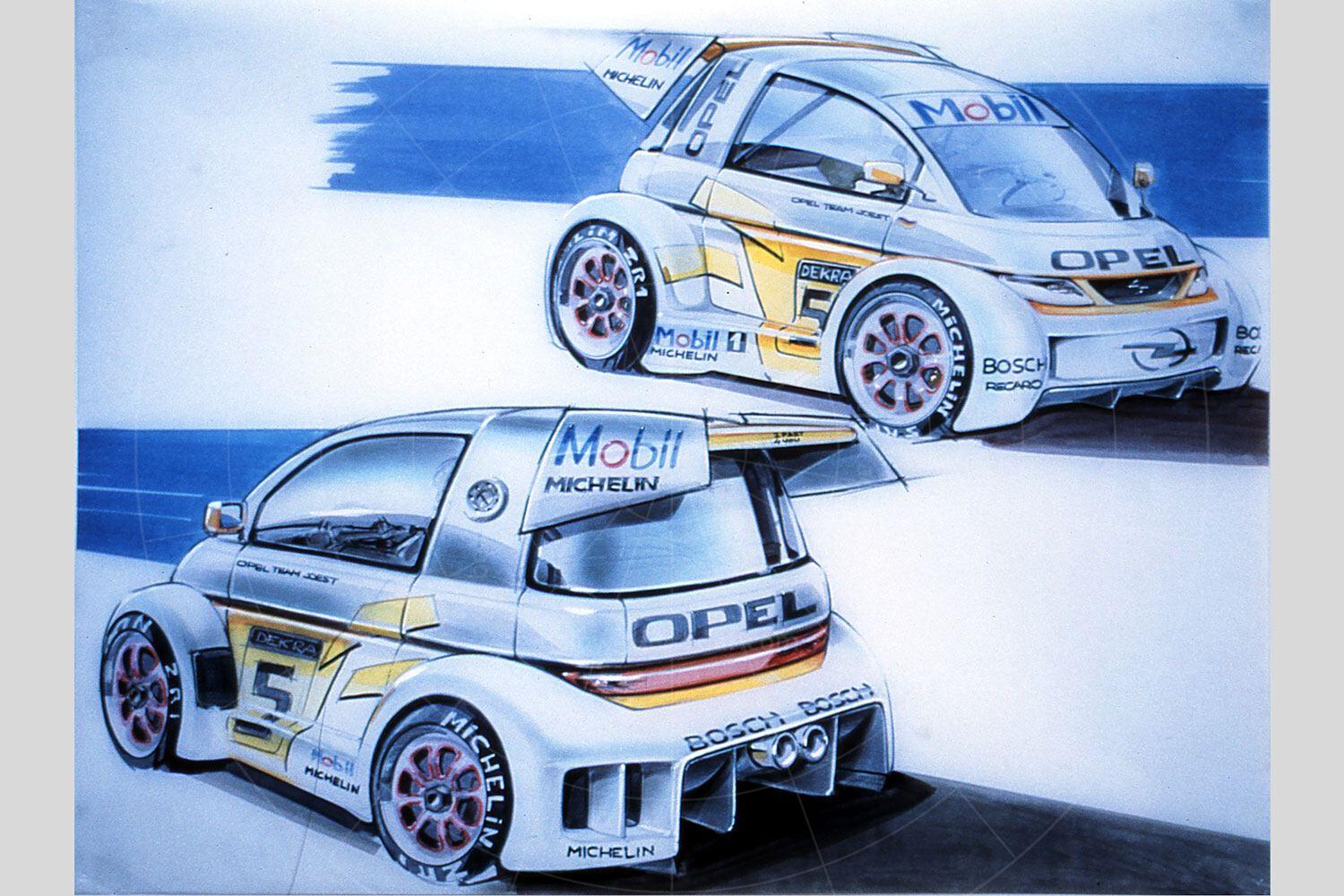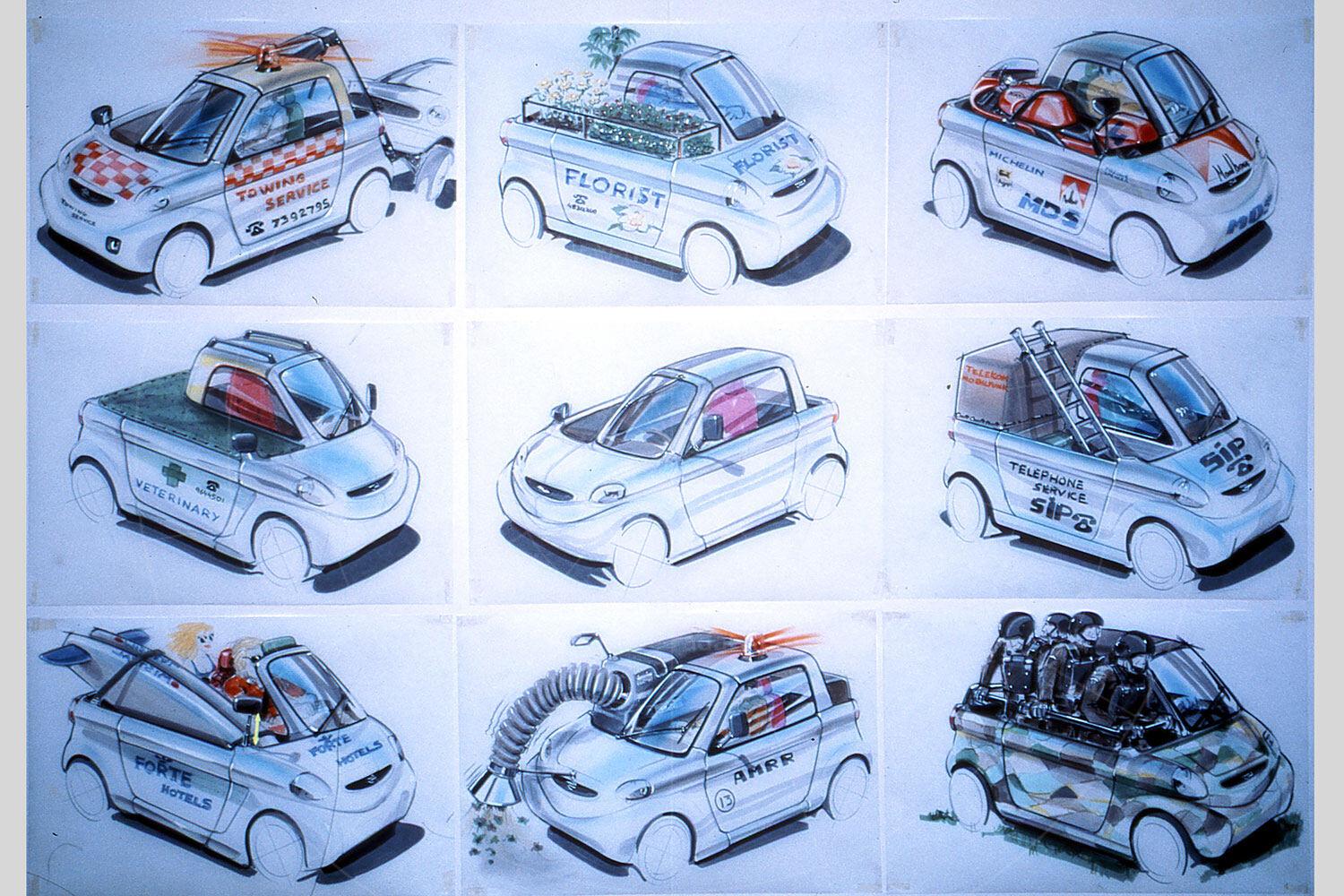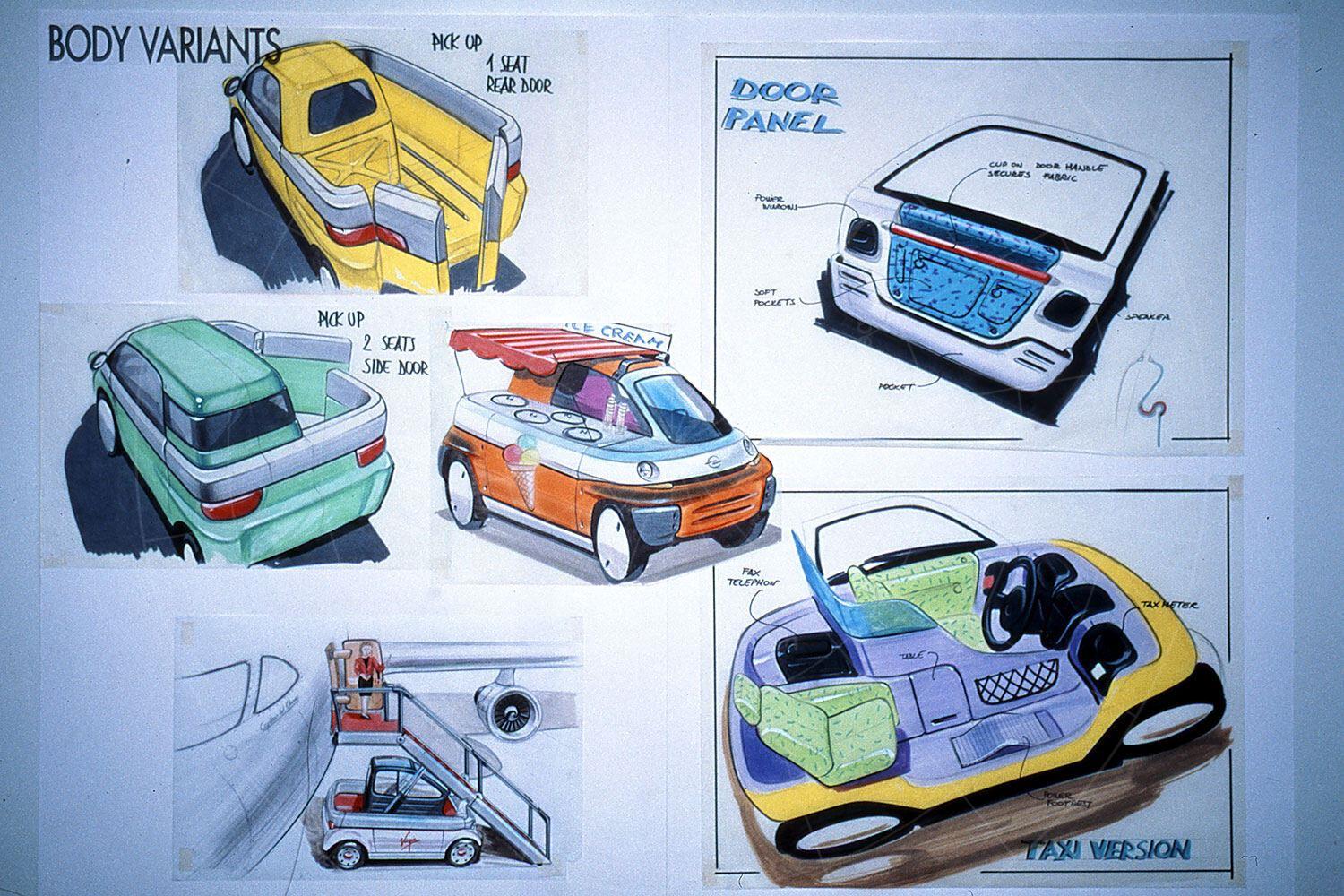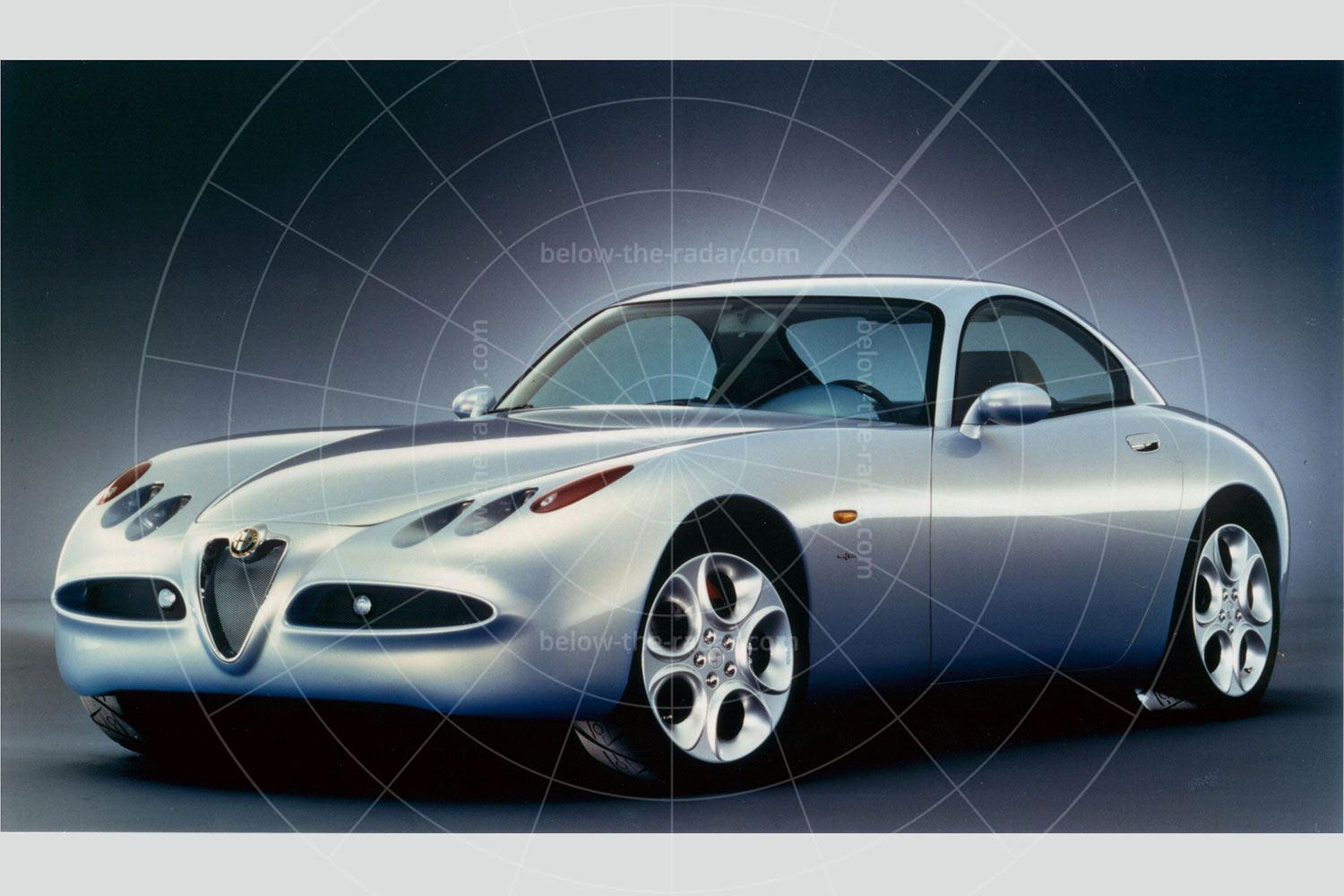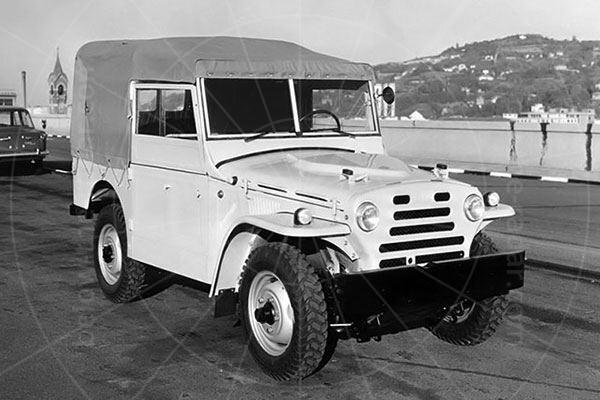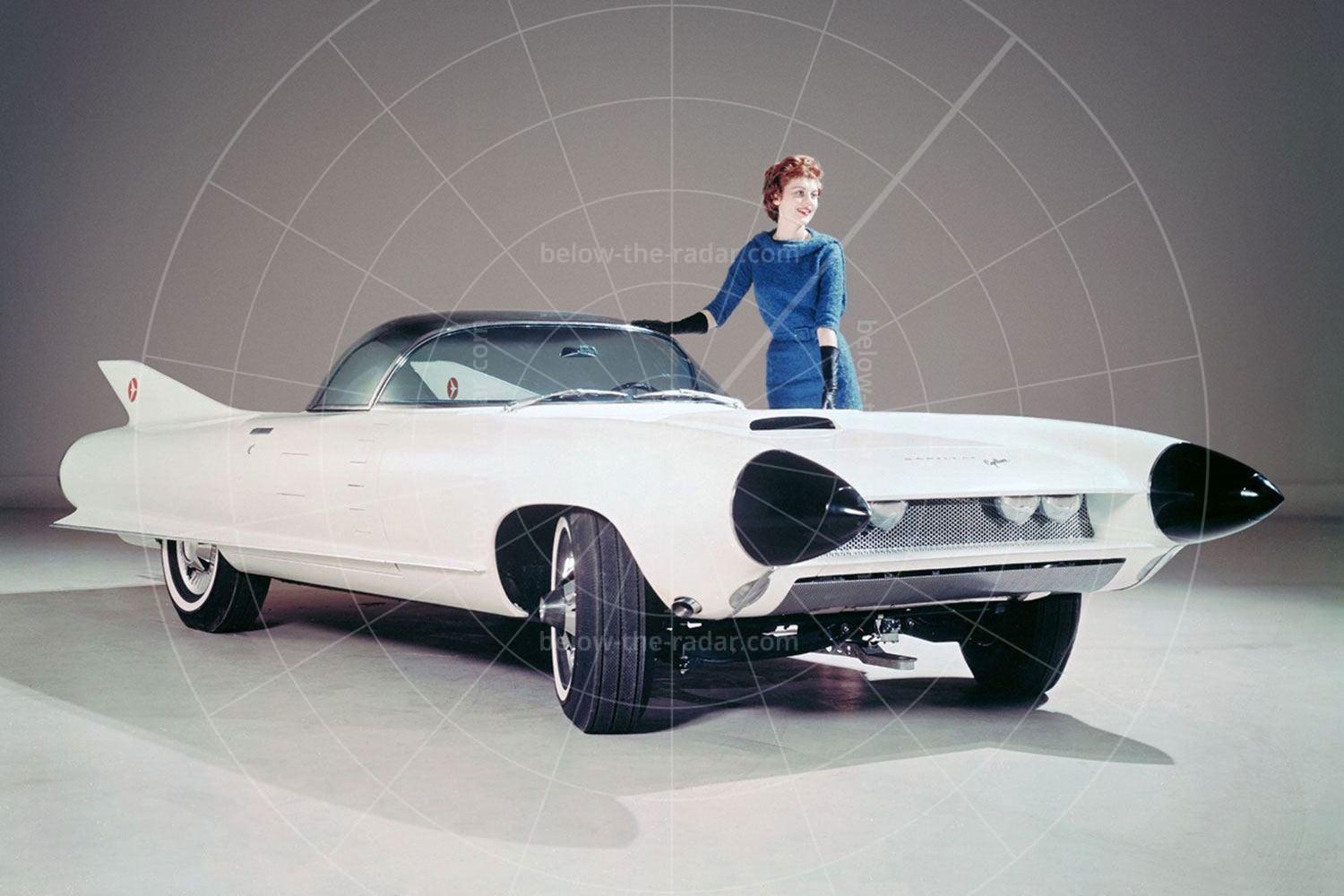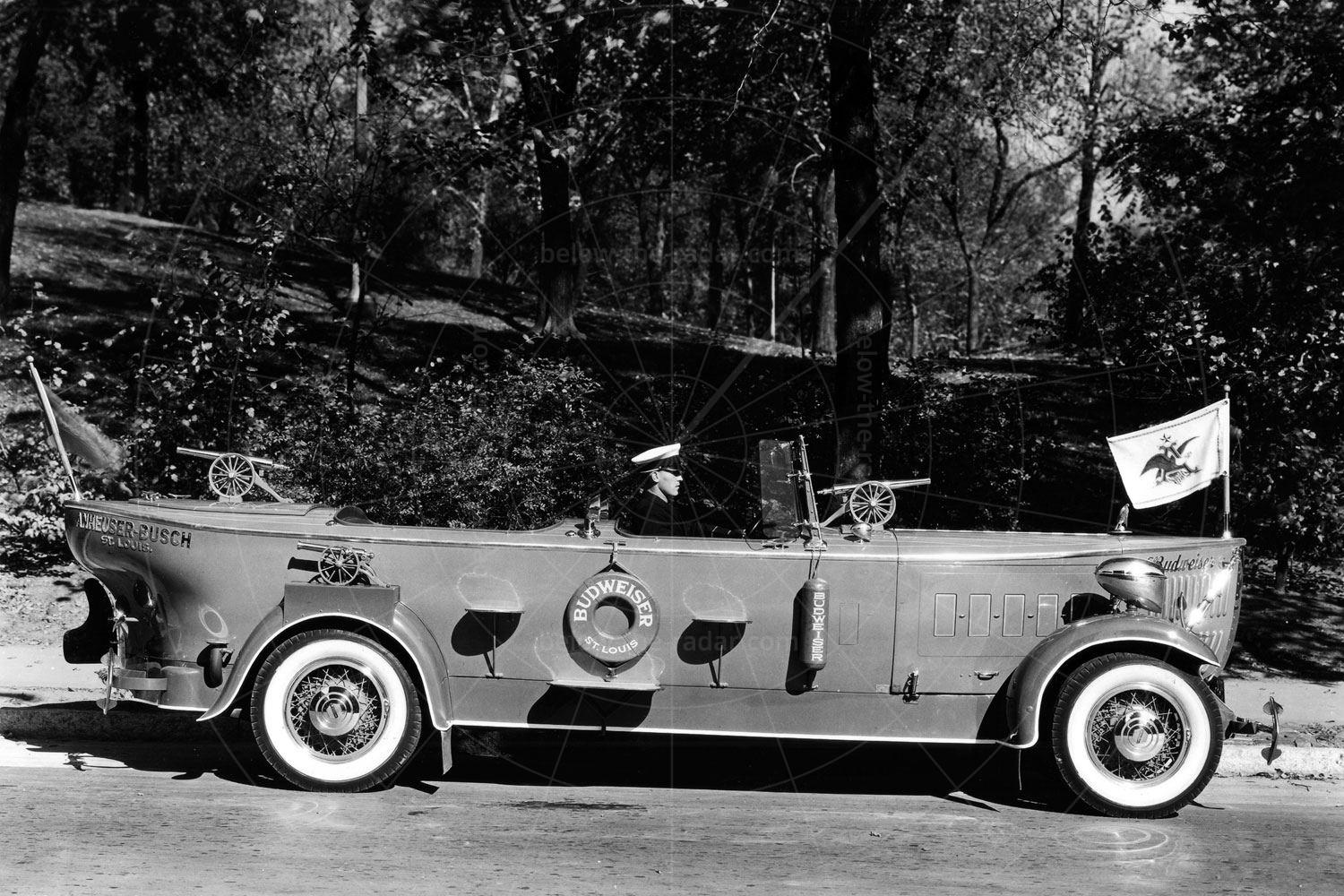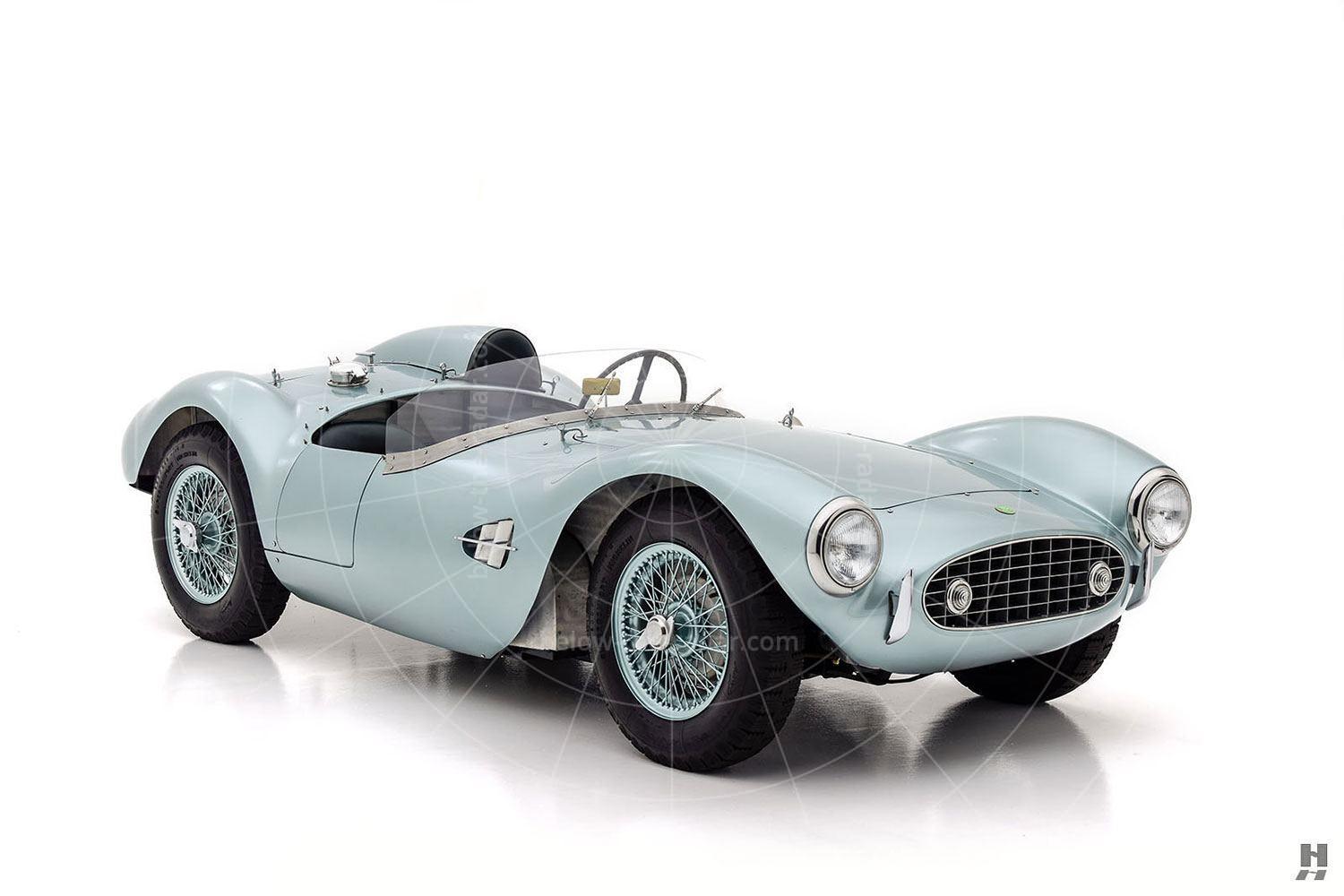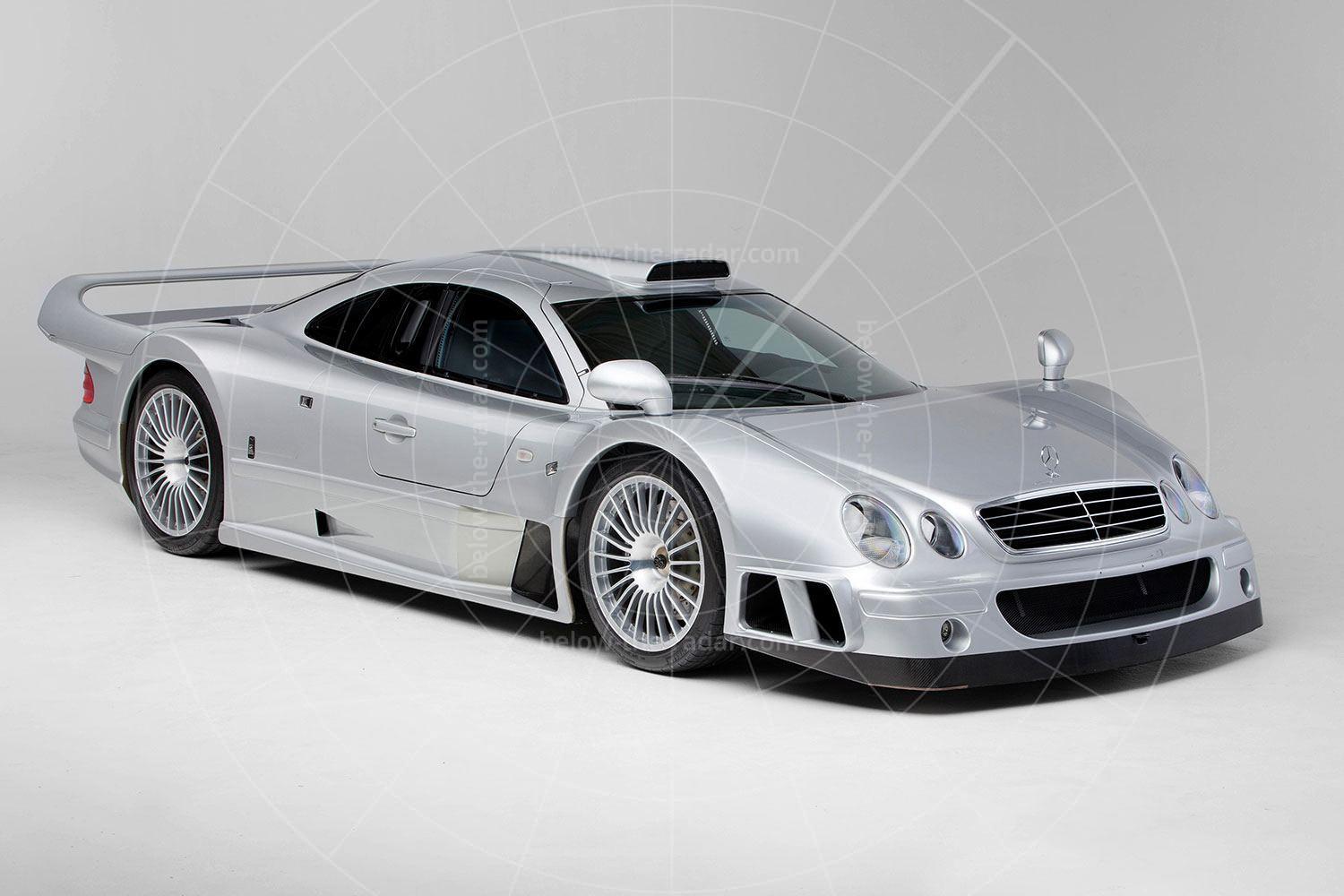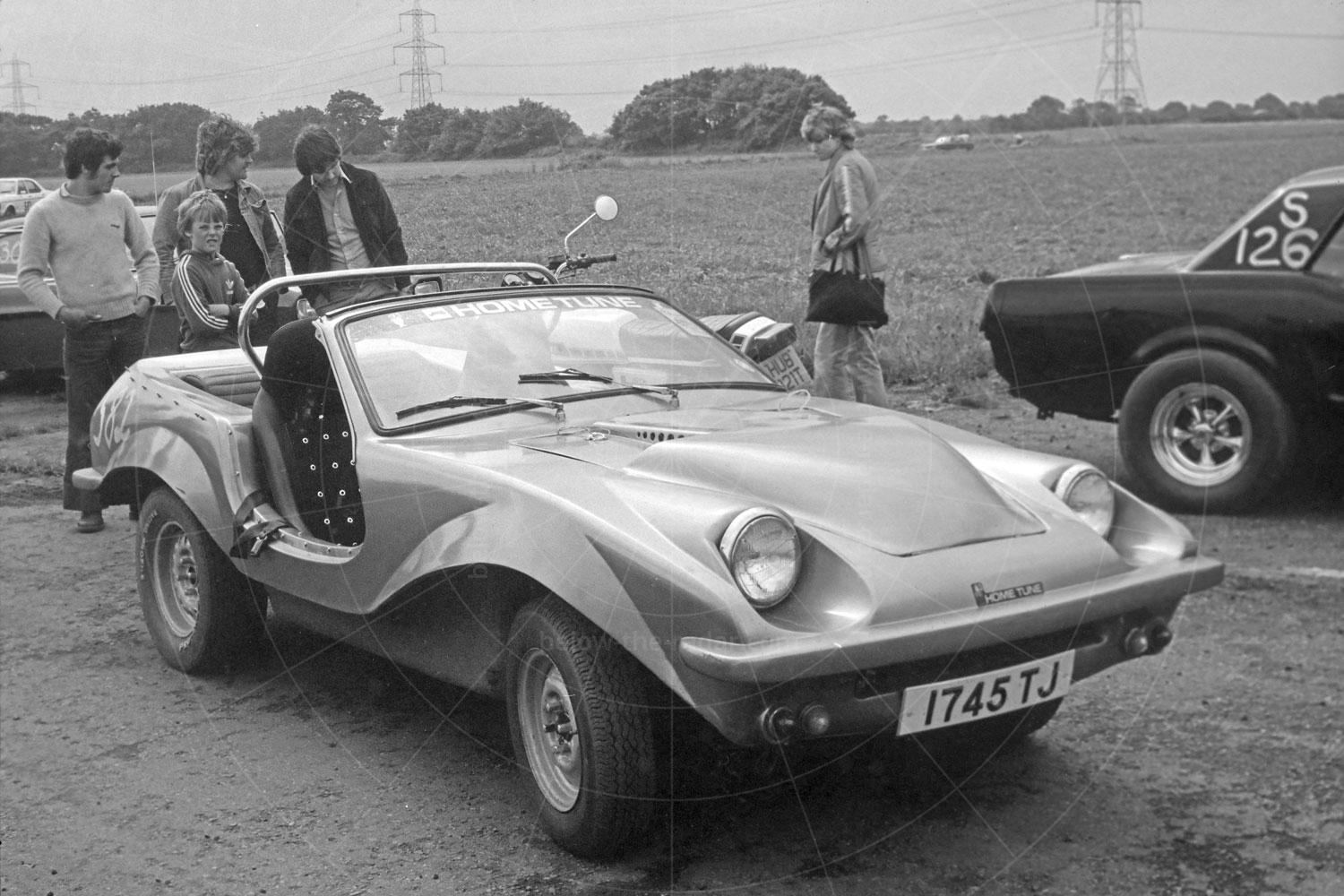As the 20th century drew to a close, environmental concerns over the car’s impact on the planet were becoming increasingly prominent. While many people aspired to own something bigger and more luxurious than what they already had, few could afford to keep upgrading to something more cosseting with ever greater performance. And as roads became increasingly congested, it made sense to look carefully at how personal transport could be made more efficient without sacrificing comfort altogether. To that end General Motors came up with a pair of Maxx concepts, which were first shown at the 1995 Geneva motor show, and which showed GM’s vision of the future of urban motoring.
There were short- (two-door) and long-wheelbase (four-door) versions of the Maxx on display, both of which were powered by the then-new 973cc cast-iron three-cylinder petrol engine that would become the standard entry-level powerplant for the Corsa. In short-wheelbase form the Maxx was 75cm shorter than the Corsa, and by using aluminium extensively in its construction, the fuel efficiency and manouevrability of the car was superb. At 3675mm, even the long-wheelbase Maxx was 15cm shorter than a Corsa.
At 2975mm, the two-door Maxx was even 75mm shorter than the original Mini, but despite its compact dimensions (its width and height were both 1575mm) there were two rows of seats, giving enough space to house four people thanks to the high roof line. Impressively, if the owner wanted more luggage space they could opt for just two seats to create a cargo area that could accommodate about 500 litres, which was much the same as an Astra estate’s.
Thanks to the slippery shape of the Maxx, the low rolling resistance of the tyres and the lightweight construction, this funky-looking concept could supposedly achieve up to 72 miles per gallon, things helped by a kerb weight of just 600kg and an engine tuned more for economy than grunt; it was rated at just 50bhp, with a 30bhp option for those who were really in no hurry.
The concept of the Maxx was very similar to that of the Smart, in that its outer panels clipped onto a central monocoque, which was what gave the car its strength. As such, the Maxx was billed as the ‘concept for tailor-made mobility’; the buyer was promised that they could choose the appearance, equipment and amount of space to suit their needs, and if their requirements changed later on, the Maxx could be adapted accordingly. That monocoque was made of aluminium extrusions to minimise weight, while the outer panels were moulded plastic so they didn’t have to be painted.
Whereas the Smart’s engine was mounted in the rear, the Maxx’s was positioned more conventionally, at the front. The front wheels were driven via a five-speed electrically actuated sequential gearbox, with the ratios selected by a rocker switch on the steering wheel. But if the driver didn’t want to have to change gears manually, there was also the option of moving the transmission to fully automatic mode.
Perhaps the most important aspect of the Maxx was its modular design; GM envisaged being able to offer a whole family of cars without having to invest in new tooling for each one. To that end it would be possible to turn the two-door Maxx into a saloon, convertible, pick-up, off-roader or sports car. More importantly, production costs could be minimised by using the same tooling for all variations on the theme; the extrusion length could be varied depending on the car’s size.
Meanwhile, the four-door version would be the space-efficient people carrier or load lugger, capable of carrying up to six people and up to 500 litres of cargo. While the project was still on the drawing board there were even thoughts of Maxx-based taxis and ice cream vans being built on a bespoke basis.
Inside the Maxx things were equally space efficient, with a very thinly padded bench front seat and a completely flat floor to minimise cabin intrusions. The simple dash featured a large digital display for most of the instrumentation (which was basically the rev counter plus a speedometer and little else), and the small amount of switchgear that was fitted was grouped together in the centre of the fascia.
By taking a modular approach, the owner could fit a plumbed-in phone, air-con, fax machine (!) and hi-fi further down the line. A driver’s airbag was fitted as standard, but the owner could also install a passenger airbag after taking delivery, once they’d saved up their pennies. As it was, the show car featured a phone integrated into the dashboard, but other than that there were relatively few gadgets fitted; lightness and simplicity were key to this concept.
Interestingly, the literature given away to promote the Maxx at the time of its launch stated quite categorically the concept was ‘a technology study only’ and that there were ‘no production plans for the Maxx, nor is it proposed as a replacement for any current Vauxhall/Opel product’. All of which is rather a shame, because instead of the Maxx we got the infinitely less interesting Corsa Mk2.
| Vital statistics | |
|---|---|
| Debut | Geneva, 1995 |
| Engine | Front-mounted, 973cc, 3-cylinder |
| Transmission | 5-speed sequential, front-wheel drive |
| Power | 50bhp |
| Top speed | 95mph |

